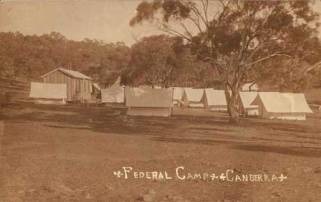Now that I’m living in Australia I’m trying to do some writing about Australia, as well as continued memories of China. I lived a third of my life in Canberra – 11 years in total, from 1991-1995 and from 1998-2003. I haven’t written much about it before, but the time has come to fix that!
Canberra is the capital city of Australia. Yes, Canberra. Not Sydney or Melbourne (the largest cities, with 4.5 million people each) but the small and slightly strange created city of Canberra, with a population of less than 400,000. Canberra doesn’t belong to any of the six States of Australia, but is instead in its own independent Territory, creatively named the Australian Capital Territory. The ACT is fully enclosed by New South Wales, the most populous state of Australia (where Sydney is). It is about 300km (186mi) from Sydney and 600km (372mi) from Melbourne.
Canberra was built on Ngunnawal land. At least 500 Indigenous people lived in the area when the first European explorers came through in 1820. As these explorers began to settle in the Canberra region in the 1830s with grazing herds, they took over land traditionally occupied by the Ngunnawal, Walgalu and Ngarigo peoples. The name “Canberra” is thought to derive from a Ngunnawal word “kamberra” (or “kambery“) possibly meaning “meeting place”. European settlement disrupted traditional nomadic patterns of movement and introduced diseases (like influenza, tuberculosis, and smallpox) that decimated the Indigenous population. I found a site with a news article from 1927, written by someone who lived in the area from 1856; he describes his knowledge of the local Indigenous population, including their kindness to settlers, and the devastating impact measles had on them.
Discussions on where Australia would have its capital began before Federation in 1900. The Canberra area was first seriously considered in 1906 and won a parliamentary ballot for preferred site in 1908. When the area of land to become the Australian Capital Territory was finalised in 1911, there were around 1,700 non-Indigenous settlers living in the region (and nearly 225,000 sheep).
In May of 1911 an international “Design Competition” was launched, seeking ideas for what to build on the piece of land they’d taken 12 years to choose. A year later one of the 137 entries received was announced as the winner. The winning designers were architect Walter Burley Griffin and his wife Marion Mahony Griffin from Chicago in the US. Second place went to a Finn and third to a Frenchman; these plans and also those of an Australian team were all purchased. After much argument a new design combining elements of all four plans was adopted in 1913 – the same year the name “Canberra” was officially adopted (though it had been in casual use for decades already). A foundation ceremony was held on March 12 of that year; this inspired the annual “Canberra Day” holiday now held on the second Monday of March. WWI certainly interrupted building plans, but things weren’t going smoothly anyway and by the end of 1921 Burley Griffin had been removed from the project. For more about the crazy story of building Canberra, and some beautiful watercolour illustrations, check out “The Utopian City That Wasn’t”.
The first land sales (sales of leases, technically) happened in 1924 and in 1925 the process of moving the public service began. Parliament was officially opened in 1927 – 27 years after Federation, Australia finally had a working Parliament in its created capital city. They met in a building now known as “Old Parliament House” designed as a “provisional” building to last 50 years. In fact, parliament would meet there for over 60 years. The ground-breaking for the permanent parliament didn’t happen until 1980; it was opened in 1988, around the bicentenary of European settlement. I love our Parliament House, I think it is beautiful and quite Australian in character – something I don’t think is easy to acheive – so I plan to write about it further another time.
The ACT first gained self-governance in 1989; before that it fell under federal jurisdiction. Fun fact: the first and third Chief Ministers of the ACT were Rosemary Follett and Kate Carnell; between them these two women led the ACT for most of its first 11 years of self-rule. The name “Australian Capital Territory,” by the way, first came into effect in 1938, around the time the population hit 100,000. By 1986 that figure was 250,000 and in the next decade it rose to 300,000.
Of course, I knew none of this when my family moved to Canberra in 1991. I was 8 years old, and had no idea what a big part this city would play in my life over the decades to come…
[I write about learning to appreciate Canberra in my next installment]






Pingback: Enjoying the cool in Canberra | Tanya's Stories
Pingback: Learning to love Canberra | Tanya's Stories